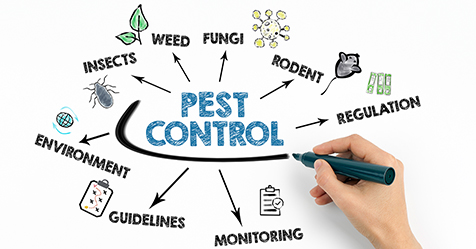Establishing metrics for your green cleaning operation depends on your goals. For purposes of this article, we will assume your goal is to clean for health and better environments as well as cleaning for appearance.
It is vital to develop a scope of work that clearly defines and details the steps to achieving both high-level and sub- or secondary goals. A scope of work is a formal document between the customer and service provider—in-house or contracted—that details the specifications of the cleaning program, and identifies deliverables including desired results, tasks and frequencies, tracking, and reporting.
A detailed scope of work links both high-level and secondary goals with tasks and task frequency, and only then can it include metrics to show progress in systematically reaching targets. The challenge is that many scope-of-work documents are vague, short on specifics, and may need rewriting to better enable reaching desired outcomes.
Below are pointers to help you develop a scope of work specifically crafted for green cleaning performance.
Re-engineering the Scope of Work
Since you cannot hit a target that does not exist, you must start by establishing the high-level and sub-goals that need to be met. If the current scope of work includes these goals, great; but, if not, you may need to start from scratch to build the main and secondary goals into the scope, and then work outward from there.
The following are examples of high-level and secondary goals to which you can assign tasks and metrics. Remember: Because we are establishing goals for a green cleaning operation, they also should achieve the following results:
- They should remove and not add contaminants, allergens, or dust.
- When practical, they should remove instead of poison germs.
- They should minimize chemistry, while maximizing results.
- They should present fragrance-free, residue-free, and nontoxic solutions.
High-level Goals: Embracing the Big Picture
People want their buildings to be healthy, but first, they want them to look and smell good. What does that mean and how can you achieve this by incorporating green metrics and solutions?
First, work with your customer to get the picture—literally. Working with the customer’s representative, decide what areas should look like when clean. Clean the space to the customer’s satisfaction, then take a photo of the desired outcome and place it into the scope-of-work document as a high-level appearance goal. Smartphones make it easy to capture shots of the ideal state of clean, enabling you to make those results aesthetic targets.
Learn from the fashion industry that uses models to sell clothing. Your photos of the desired outcomes are like those attractive, well-groomed, well-dressed models; they make the product—in this case, your cleaning services—desirable. Make your cleaning sexy by selling it.
Second, note how the office smells. It is important to help customers understand that clean does not necessarily have a smell. Fragrances are often air pollutants—with some exceptions, such as the aroma of a flower garden on a spring day—and therefore should be minimized. A lack of smell equals a clean environment and does not introduce outside contaminants during the process. Write it into the scope-of-work specifications.
Secondary Goals: Clean for Health
Now that you have the desired appearance goals nailed down, it’s possible to set secondary goals that make your cleaning healthier, creating a greener environment for your building occupants. Measurement tools can help to achieve this. For example, you may try to reduce the levels of dust in an area and document those levels by using particle counters. Inexpensive passive particle counters exist that can be placed in offices or other spaces to record airborne dust levels over time. Results can be uploaded to a computer and graphed to show improvements resulting from improved process.
No matter what assessment tool you use, establish a protocol, be systematic, and stick to the plan.
The scope of work can include taking these measurements with the goal of showing improvements to indoor air quality rather than hitting arbitrary metrics or numbers.
To establish metrics for measuring outcomes, start with a baseline measurement, then show before-and-after results from the implementation of, for example, a different vacuuming or dusting system, or even alterations in task frequencies. Since some facilities extend out task frequencies to meet budget constraints, it is helpful to know the results that can occur from less dusting or vacuuming.
If you prefer the white-glove approach, select five surfaces in an office as your sample, and swipe a clean white glove across the same five one-foot areas, taking a photo of what deposits on the glove each time. As you improve your processes, the gloves should stay visibly cleaner.
Adenosine triphosphate (ATP) devices are becoming the de facto means of showing reduction of organic soils that can harbor germs. Check out ISSA’s Clean Standard (Editor’s note: Available for institutional and commercial and K-12 school environments; see www.issa.com/cleanstandard for more information) for sampling and range guidelines, though you may wish to simply show general improvements rather than hitting numerical ATP level goals.
Tracking and Reporting
Fluorescent marker technology can also help to show whether or not surfaces have been wiped by placing an invisible mark on surfaces scheduled for cleaning. An inspector then follows the cleaning crew with a black light. Marks that have not been removed by wiping will glow. This practice can be integrated with ATP surface sampling, and built into the scope of work as a means to show the impact of your cleaning program and how results are lowering the levels of organic soils that promote microbial life.
Additionally, survey customers quarterly for their impression of the cleaning. Use a scale of 1-10, and track those findings to show consistent satisfaction or areas for improvement and resurveying.
Conclusion
Start with a complete scope of work that defines and sells your cleaning program through visuals and measures it through outcome metrics.
By developing a comprehensive scope of work, cleaning professionals can sell their services and establish green cleaning performance metrics that matter. The key is to define aesthetic and health-related metrics while achieving the ultimate goal of customer satisfaction and well-being.
Definitions You Can Use
Cleaning: The removal and proper disposal of unwanted matter
Green cleaning: Cleaning to minimize negative human health and environmental impacts, indoors and out
Performance: The degree to which you achieve a desired cleaning goal
Numbers: Numbers for measuring cleaning performance
Green cleaning performance metrics: Numbers measuring how well a green cleaning operation meets stated goals.



